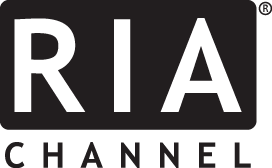Nasdaq 100 Index: Alternative Nasdaq-related ETFs
In the table below we have presented a full list of Nasdaq-related ETFs with at least $100 million in AUM. We will briefly discuss some of the funds that were not covered above in the following sentences. The Fidelity Nasdaq Composite Index ETF ONEQ launched in 2003 as a broader alternative to the Q’s, including exposure to the entire Nasdaq Composite Index of nearly 2,000 securities. It is a capitalization-weighted fund, and much of its exposure is dedicated to the Nasdaq 100 components. In June of 2008, PowerShares launched the PowerShares Nasdaq Internet Portfolio PNQI which is a modified market cap-weighted fund that primarily invests in large, liquid companies that are engaged in Internet-related businesses. The Fund has about 84 holdings as of August 1st and 14 of the Fund’s holdings can also be found the Nasdaq 100. In August 2012, the First Trust Nasdaq Technology Dividend Index Fund TDIV began trading, which uses a dividend value weighting methodology as well as a rising dividend screen to construct its portfolio. This Fund does use an inventory beyond that of only Nasdaq listed securities, however, and it can also have exposure to Telecom stocks as well. In February 2014, PowerShares and Nasdaq began utilizing a DWA index to enhance the PowerShares DWA Nasdaq Momentum Portfolio DWAQ, seeking to track a relative strength driven strategy. Like some of the aforementioned funds, DWAQ is not bound by strictly the Nasdaq 100, but rather uses a starting inventory of roughly 1,000 Nasdaq-listed companies. From there, we employ relative strength to reconstitute the portfolio of 100 stocks each quarter. Index components must earn their way into the portfolio with superior performance trends relative to other Nasdaq listings, and the current composition of DWAQ includes 22 such Nasdaq 100 components.

Summary
The purpose in discussing the different products out on the market that seek to track the NDX Index, or other indices, is to show that ETFs give investors the ability to take different investment approaches, while investing in similar baskets of stocks. The NDX is not the only index out there that has a number of products that seek to utilize the index differently. With the market rallying to new highs recently, it is worth taking time to assess the various products that follow an index your client is looking to gain exposure to. The ability to get more granular and focus on where we may want to gain exposure to an index is part of the innovation that ETFs provide to the marketplace. Not only do these ETFs give your clients a myriad of ways to invest in certain segments of the market, but they are also useful in gaining perspective on the market or segment that you may be watching. With the Domestic Equity markets showing positive signs recently, it is worth taking the time to look at the different products that may track an index you are looking to gain exposure to. One of them may be just what you are looking for and could be a good addition to your shopping list of ETFs.
Nasdaq (Dorsey Wright’s parent company) provides the Nasdaq 100 Index for use in some of the products described above, and as a result receives licensing fees from the products’ sponsors. These license fees are calculated as a percentage of assets invested in the products.
Neither the information within this email, nor any opinion expressed shall constitute an offer to sell or a solicitation or an offer to buy any securities, commodities or exchange traded products. This article does not purport to be complete description of the securities or commodities, markets or developments to which reference is made.
The relative strength strategy is NOT a guarantee. There may be times where all investments and strategies are unfavorable and depreciate in value. Relative Strength is a measure of price momentum based on historical price activity. Relative Strength is not predictive and there is no assurance that forecasts based on relative strength can be relied upon.
Unless otherwise stated, the returns do not include dividends for stocks or ETFs. Unless otherwise stated, returns of stocks and ETFs do not include all fees or transaction costs. Investors cannot invest directly in an index. Indexes have no fees. Past performance, hypothetical or actual, does not guarantee future results. In all securities trading there is a potential for loss as well as profit. It should not be assumed that recommendations made in the future will be profitable or will equal the performance as shown. Investors should have long-term financial objectives.


